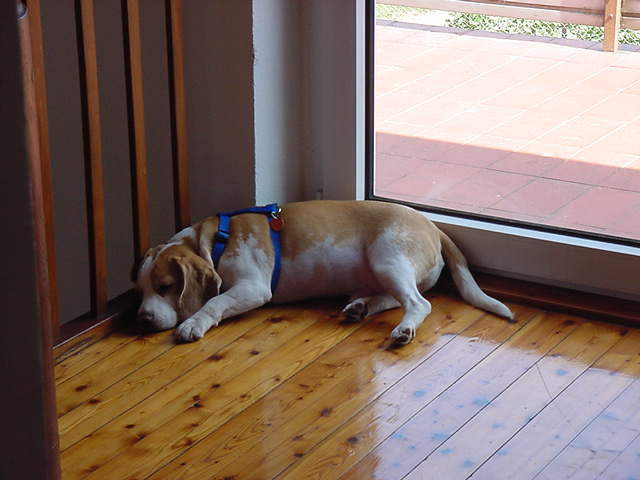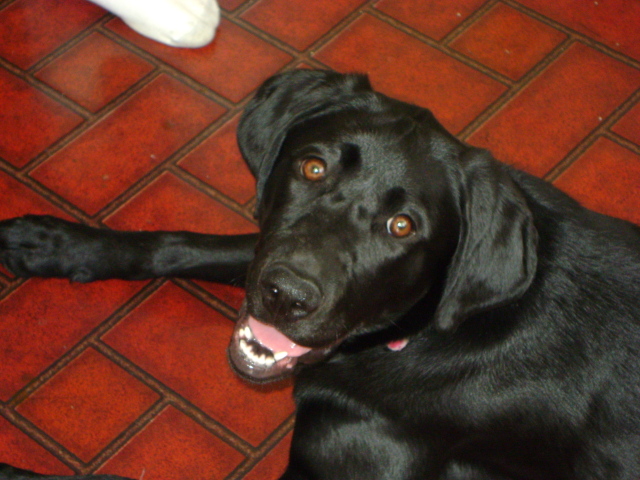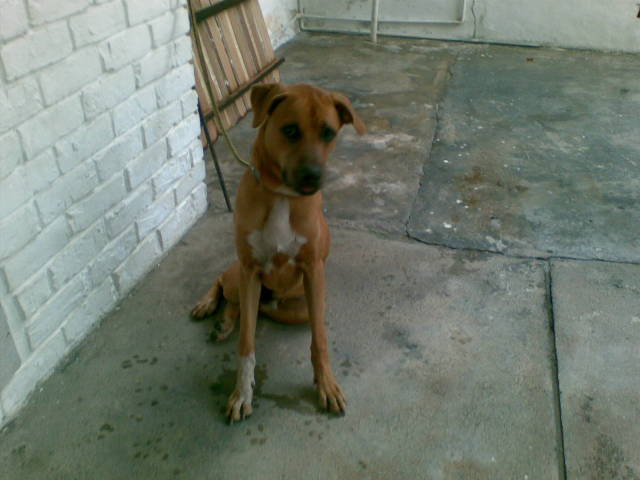QuestionI am a "budding" canine obedience trainer and have been doing a lot of research on canine behavioral training.
This is a personal question... I have an approximately 1.8yr old rescue "Carolina dog". She is exhibiting behavior similar to what would be expected from a pup that was removed from her littermates too soon or did not have littermates to learn from. She is also has high anxiety. Many of the related behaviors to this theory and her anxiety I have been able to sucessfully "train out" of her via positive reinforcement and clicker training. However, I have not been able to figure out how to get her to understand when another dog is done playing. She does not read their "all done" cues during a play session, and I usually have to step in to provide that final "enough - play is done" cue. How can I get her to start reading this cue on her own? Is this possible? I am most concerned with her reading her "brother" (a rescue dog adopted into the home about 3yrs before her.)
Thanks for your help.
AnswerYou cannot accelerate, or even introduce, a response to the normal communication signals from "strange" dogs, but you can hope for a generalization behavior, once she learns to respond to her "brother".
Train the Carolina to a "quit" signal (using clicker) during play training exercises with a special object (a coveted stuffy, one you carry around for a few days in her presence.) Teach her to "quit" (release) the stuffy first; then chain that behavior with a "go to" behavior ("go to heel"), so that the dog learns "quit" means "go to" for jackpot reward. I consider that this training should take you approximately 50 to 75 trials (give or take, hard to tell not having observed the dog's information processing.) It is (essentially) fast mapping and each dog has a different threshold, but eventually she will learn "quit and go to". At that point, begin to observe the play interaction between Carolina and Brother and use your "quit" signal the MOMENT you observe Brother communicating. If Carolina's behavior breaks down (and it most likely will the first few times), go back to square one with her, reintroducing "quit" and "go to" separately (should take only 2 to 3 trials) and then connecting them. Then go back to your Test and use it when Brother communicates. Repeating this CONSISTENTLY (every single time without fail) will (eventually) assist Carolina in connecting the "quit, go to" signal from you to the behavior from Brother. Whether or not she generalizes this to other dogs is not something I can guaranty, especially not in the short term. But when you see her VOLUNTARILY "quit and go to" with Brother, you can then begin to stagger the reward (staggered reward accelerates learning) until (after many weeks, if not months) eliminating it and relaxing the learned response (by not acknowledging the "go to" behavior so it extinguishes.) This will assist her in generalizing the "quit". As she gets older, she should begin to acknowledge the body language of "strange" dogs, but if she does NOT you have obtained a lifelong habit of "quit go to heel", which should help you control outdoor experiences.
Additionally (after answering this question a few minutes later this popped into my head), your dog may BE responding to communication signals from other dogs (if she's responding to initiation signals, like the play bow) and her over excitement might be inhibiting her ability to quit. If this is the case, you will see it easily (by observing her with Brother, at least) and, should it prove to be true, you need to make the "quit" response HIGHLY rewarding. Both the Aussie and the Standard poodle are independent, strong thinkers and can problem solve easily. The "quit" command needs to be trained separately from the "go to (heel)" command, and then chained once both are proven.

 Agressive 1 yr old mini goldendoodle
Question
our millie
My husband and I got our min
Agressive 1 yr old mini goldendoodle
Question
our millie
My husband and I got our min
 licking the floor not stop
QuestionGeorgie
QUESTION: Hi,
I have a 7 year ol
licking the floor not stop
QuestionGeorgie
QUESTION: Hi,
I have a 7 year ol
 Black lab - 1 yr
QuestionSheba
QUESTION: My lab loves to bite her
Black lab - 1 yr
QuestionSheba
QUESTION: My lab loves to bite her
 uncontrollable beagle
Question
max
My beagle is a year and a half. Ive had hi
uncontrollable beagle
Question
max
My beagle is a year and a half. Ive had hi
 dogs behaviour
QuestionMy 8 months old Dusto
QUESTION: My puppy
dogs behaviour
QuestionMy 8 months old Dusto
QUESTION: My puppy